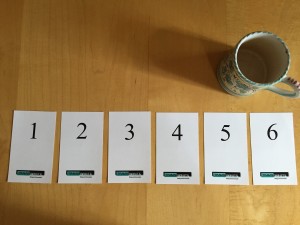Are Creative Countries Happier? More Competitive?

Good place to be creative.
Is it possible to measure a country’s creativity? If so, how does creativity relate to other national characteristics like prosperity, sustainable growth, and happiness?
And, is it time to think less about creative companies and more about creative cities? Perhaps instead of giving tax breaks to attract companies, creative cities should charge a fee to companies that want to capitalize on their creative citizens. But then, how do you create a creative city?
Creativity is joining the traditional trio of land, labor, and capital as one of the key drivers of productivity and growth. In the traditional industrial world, we could use standard measures of land, labor, and capital to identify competitive advantages and disadvantages. But what about creativity? How do we measure countries (and cities) on their creative potential? And how do we develop a competitive advantage in creativity?
These are some of the basic questions the 2015 edition of the Global Creativity Index (GCI). The Martin Prosperity Institute* (MPI) created the index and first published it in 2004, with an expanded version arriving in 2011. (Click here). This year’s index, published over the summer, is the most comprehensive yet.
Can you really measure a country’s or a city’s creativity? MPI argues that there are three elements of creativity and that we already have multiple indexes for each of them. Conveniently, each element begins with a T.
Technology – countries that produce innovative technologies are probably more creative than those that don’t. The GCI uses existing indexes of R&D investment and patent activity to measure the Technology component of creativity.
Talent — the war for talent is certainly raging in creative circles. Old school companies – like Accenture – are buying up design firms – like Fjord – to focus their creative talents on business issues. But how do you measure the creative talent in a country? The GCI uses educational and occupational indexes to identify the creative class.
Tolerance – we know that diversity counts in innovation. Getting different people with different ideas to “collide” is a fundamental innovation strategy. Diversity requires tolerance of other people and of ideas that were not invented here. How to measure tolerance? The GCI uses two proxies: “openness to ethnic and religious minorities and openness to gay and lesbian people”.
MPI researchers create an index for each of the three Ts and then roll them altogether to create one Global Creativity Index. In this year’s ranking, Australia comes in first – it’s the most creative country in the world. Following Australia (in order) are the USA, New Zealand, Canada, Denmark, Finland, Sweden, Iceland, Singapore, the Netherlands.
Does this list sound familiar? It’s quite similar to the list of the happiest countries in the world. (Click here and here). The Nordic countries dominate the happiness rankings. Similarly, Australia, New Zealand, Canada, and the Netherlands are always near the top of happiness indexes.
So, does happiness cause creativity or vice-versa? Are we just measuring the same thing in different ways? Let’s talk about it more in upcoming articles. In the meantime, I hope that you’re both happy and creative.
*MPI is headed by Roger Martin and located at the Rotman School of Management at the University of Toronto. Long-time readers of this website will remember that I’ve written about both Martin and Rotman several times. Martin encouraged Rotman to adopt design thinking as a core element of the curriculum. I’ve also referenced Martin’s efforts to bring critical thinking to business schools. He also advised A.G. Lafley of P&G on strategy. Interesting thinker; interesting school.
Rabies and Burglaries

Architect or burglar?
Long-time readers of this column know that I’m an advocate of mashup thinking. You take an idea from Column A and an idea from Column B and mash them together. So, for instance, X-rays (Column A) when mashed up with computerized image processing (Column B), yield an important new product called CT scanners.
A good way to brainstorm is simply to mash up ideas from different categories. You’re not thinking out of the box. Rather you’re thinking out of multiple boxes. What would you get if you mashed up, say paper with pasta? Would it be edible paper? Or maybe pasta that you could print messages on? Would it be useful? Maybe. Maybe not. What’s useful is the process of getting there.
So, I was delighted to see that the Museum of Contemporary Art (MCA) in Denver has started a program called Mixed Taste. MCA describes the program as Tag Team Lectures On Unrelated Topics. The idea is simple – they choose two topics (seemingly out of thin air) that are completely unrelated. Then they get speakers to speak on each topic. They rent an auditorium, get a band, invite the public, and have at it.
Last night, the topics were rabies and burglary. I thought of these as two completely unrelated topics but, when you mash them up, you get some surprises. And that’s the point.
At the event, Monica Murphy and Bill Wasik spoke first. They’re good Brooklynites and also the authors of Rabid: A Cultural History of the World’s Most Diabolical Virus. Here are some things you might not know about rabies.
- It doesn’t travel through the blood but through the nervous system. So it outflanks the blood-brain barrier and heads for the brain.
- It “wants” to get to your brain so it can change your behavior. Most importantly, it wants to stop you from drinking water, an activity that would weaken the virus. Thus, rabies victims develop hydrophobia, an extreme reluctance to drink water. (Here’s another virus that changes your behavior).
- It’s been with us for a long time and it’s almost always fatal.
Geoff Manaugh, an architect who created the popular BLDG|BLOG, spoke next. Manaugh also has a book that will launch next spring called, A Burglar’s Guide To The City. Manaugh pointed out that architects are enablers of burglars. Burglars couldn’t operate without built environments. Architects may think they’re building useful or inspiring structures but they’re also creating a playground for burglars. A good burglar can identify patterns in buildings and use them to locate vulnerabilities. Burglars are often avid students of architectural codes.
So what’s the similarity here? The one I took away is this: Burglars are to buildings as rabies is to humans. Here are some similarities:
- Both take structures (buildings, the human body) developed for one purpose and twist them to their own ends.
- Both have evolved the ability to avoid or overcome sophisticated security measures.
- Both spread in similar ways. A rabid animal creates additional rabid animals. A burglar creates additional burglars.
- Both evolve and adapt to changing situations.
I never would have thought of these similarities if MCA hadn’t mashed them up for me. I found it fascinating. But is any of it practical or useful? I’m not sure … but perhaps we can adapt the techniques we use to control viruses to also control burglars (or vice-versa). But even if that’s not the outcome, we’re practicing the art of mashups — an intriguing thinking process that can produce surprising insights and innovations. For that, I thank the MCA.
(By the way, Monica Murphy, Bill Wasik, and Geoff Manaugh are all very good speakers and I recommend them highly to you).
Equal Opportunity Idea Generation

Pick a card.
At the beginning of each term, I give my critical thinking students a set of six cards. Each card has a number on it – one through six. (I also add my logo to do a little low-cost branding).
Students bring the cards to each class. I use them to guide discussions about topics where there is no obvious right answer. I ask a question with up to six alternative answers. I then ask the students to select the “best” answers and — when I give a signal – to hold up the number that represents their choice.
The trick is to do it simultaneously. Then I say something like, “Jamal, you’re holding up number six and Carmen is holding up number three. Let’s discuss why you’ve chosen different answers.” This often leads to some very robust discussions. Nobody hides and everyone knows that they may be asked to explain their opinion. If you mix in a little humor, it can also be a lot of fun.
I call these equal opportunity discussions. In most discussions, I find that whoever speaks first exerts undue influence on every subsequent speaker. It’s a phenomenon called social convergence and it’s impossible to eliminate unless you have everyone “speak” simultaneously. With simultaneous responses, everyone has an equal opportunity to get their idea across.
I first used this system during the merger of Lawson, an American software company, and Intentia, a Swedish software company. Both companies had about 2,000 employees. They also had different national traditions and corporate cultures. Every employee had an opinion about what the new company culture should be. The question for managers (including me) was: how do we gather, weigh, and merge these opinions?
We decided to use equal opportunity discussions focused on how the new culture would respond to different behaviors. For instance, in a meeting with up to a dozen employees, we might ask a simple question: “Klaus is always late to staff meetings. In our new company culture, what do you think Klaus’ manager should do?” We included a list of up to six answers. We asked the employees to consider the answers and then hold up her or his chosen answer simultaneously. This produced some very spirited discussions.
We kept track of how different groups answered each question. Did marketers answer the questions differently than, say, engineers? How about executives versus individual contributors? It took time but it was very valuable information that ultimately led to a coherent new culture.
A similar technique works well in promoting innovation. The first step is to gather a wide range of diverse ideas. Letting one person speak first (especially the boss) will reduce diversity. When I ran staff meetings focused on creating new ideas, I would frame up the issues several days in advance. I asked each participant to consider the issue and develop his or her best ideas. I then asked them to write down their ideas – no more than a paragraph or two. When we got to the meeting, I asked everyone to push their written descriptions to the middle of the table. I then gathered them up, shuffled them a bit, and started the discussion.
I thought about these processes when I spotted a recent article in Harvard Business Review titled, “People Offer Better Ideas When They Can’t See What Others Suggest.” The context is slightly different – the authors are looking at programs like Dell’s Idea Storm site or the My Starbucks Idea site.
Though the context is different, the process is essentially the same. The authors write that, “The trick is to avoid clustering, where the same people have the same experiences.” They also created anti-clustering software that ensures “…that no participants share the same body of ideas and the same neighbors as anyone else.”
I’m sure the anti-clustering software is more sophisticated than my cards. But if you want to get off to a quick start, the cards work pretty well. Just make sure that every idea has an equal opportunity to “win”.
Making Peace

I hear you.
I once saw a flight attendant defuse a quarrel between two passengers. She did it calmly, assuredly, and quickly. I couldn’t hear what she said but I could see the result – the two passengers seemed to make peace with each other.
Given the tenor of our times, the ability to make peace between two people (or two organizations) may well become a very valuable skill. It’s also a teachable skill. Here are the tips I’ve picked up in researching the topic.
Take a step back and a deep breath – you’ll want to slow things down and derail the rush to judgment. It’s likely that both parties are thinking in System 1 (and only System 1). You need to help them activate System 2 – that’s where the quarrel can be resolved. Ask both parties to think consciously about what’s going on. Asking each person to literally take a step backward can be a good starting point – it activates embodied cognition.
Clarify their intentions – saying, “I assume that both of you want to settle this amicably…” can help you clarify their intentions. It also activates their System 2 – they have to think about what they want. It can also help you identify obstacles to an amicable agreement.
Back away from the conclusion – System 1 is very good at taking partial information and jumping to a conclusion, often erroneously. Ask each person to describe the situation in his own words. Don’t interrupt and don’t allow the other person to interrupt. Then ask, “What do you conclude from this?” and “Do you think that’s a fair conclusion?” “Why?”
Climb the context ladder — Many quarrels result from an overly narrow focus; both parties frame the issue too tightly. They don’t see the context and history. Asking questions like “How did we get to this point?”, “Why do you think this happened?” can help them climb the context ladder and get a broader understanding of the issue.
Listen, rinse, repeat – both parties will want to know that their side has been heard and considered. Listen carefully and summarize what you’ve heard. (“So, what I hear you saying is…”). If one person keeps repeating the same point, she doesn’t feel that she’s been heard. Repeat the process as necessary.
Identify points of agreement – most disputes are not black and white; they also contain many shades of gray. The participants may not recognize that there are many points of agreement. In fact, there may be more points of agreement than disagreement. Be sure to point these out and ask each party to validate them.
Avoid assumptions – don’t assume that you know how the parties feel or what they want. Ask questions even when the answer seems obvious. Ask both parties to explain themselves fully, while the other party is listening.
Don’t play winners versus losers – you want an agreement that both sides can live with. There’s no point in identifying one person as a winner and the other as the loser. A person who is identified as a loser will likely see the entire process as biased and unfair.
Don’t make recommendations; draw them out — an arbitrator listens to both sides and renders a judgment (often with a winner and a loser). A mediator also listens to both sides but doesn’t render a judgment. Rather, your job is to draw out recommendations from the two parties. Be patient; this will take time. But, it’s worth it in the end. If the parties themselves recommend the solution, both sides are more likely to live with it.
Willpower Is A Muscle. Happiness Is A Skill. Empathy Is A Choice.

I think I’ll be empathetic today.
As I learn more about how we think, I’m surprised at how often I need to reframe my basic conceptions of how the brain works. I’m also struck by how many choices we can make if, and only if, we’re aware that we can make them. Here are three examples.
Willpower is a muscle
I’ve always imagined that willpower was innate and immutable. Some people have more; some have less. I admire people who overcome great challenges through sheer force of will. I also think that they have more willpower than I do and I probably couldn’t achieve the same results.
But maybe I could. The new paradigm suggests that willpower is much more like a muscle. It can be trained. It can also get tired.
The American Psychological Association defines willpower as “…the ability to resist short-term temptations in order to meet long-term goals.” It also suggests that “…willpower can in fact be strengthened with practice.”
How do you build your willpower muscle? It involves both the mind and body. Sleeping well and eating right help. Meditation and exercise also play a role. Then it’s practice. Practice not eating that donut. Practice not checking your e-mail quite so often.
But beware of decision fatigue. Like a muscle, your willpower reserve can get depleted. If you check your desire to smoke all day long, you’ll find it harder to resist a big dessert after dinner. It’s a good reason to make big decisions in the morning.
Happiness is a skill
I didn’t realize it but I’ve long subscribed to the set-point theory of happiness. The theory suggests that happiness, “…is determined primarily by heredity and by personality traits … and remains relatively constant throughout our lives.”
In the set-point theory, happiness is a result not a cause. It results from who we are and what happens to us. We simply respond to our circumstances.
But the neuroscientist Richard Davidson suggests that happiness is a skill that we can practice and improve. He notes that, “Everything we’ve learned about the brain suggests that it’s no different than learning to play the violin or learning to engage in a complex sport. If you practice at it, you’ll get better at it.”
How do you practice it? I find that the simple act of smiling can make me happier. Beyond that sleep, nutrition, exercise, and meditation can help. (Sound familiar?) Then there is the art of giving. Focusing on your happiness won’t make you happy. Focusing on someone else’s happiness is much more likely to do the trick.
Debby Hampton also recommends the STAGE framework. The five elements are Savor, Thank, Aspire, Give, and Empathize. Give it a try – it may also help you build willpower.
Empathy is a choice
David Foster Wallace probably said it best in his famous This Is Water speech at Kenyon College. (Short video here; full video here). In essence, he says that we can choose to be angry with people or we can choose to see the world as they see it and empathize. It’s a choice that brings to mind Ian Maclaren’s quote, “Be kind, for everyone you meet is fighting a hard battle.”
While Wallace said it most lyrically, there’s also solid scientific evidence behind the thought. For instance, Jamil Zaki writes in Scientific American that empathy, “…is not how good a person is at empathizing, but how motivated they are to engage with others in the first place.”
Similarly, Daryl Cameron et. al. cite recent studies that “…suggest that empathy is a limited resource, like a fossil fuel, which we cannot extend indefinitely or to everyone.” Sound familiar?
Cameron and his colleagues dispute the notion that a lack of empathy is “…is inherent, a permanent flaw in the emotion itself.” Rather, they write, “…we believe that empathy is a choice that we make whether to extend ourselves to others.” After reviewing the literature, they conclude that “In our view, empathy is only as limited as we choose it to be.”
Choices and Burdens
The idea that willpower, happiness, and empathy are choices is both empowering and burdensome. I’m happy to know that I have the power to change my thinking and attitude. I also realize that this makes me responsible for my own psychological well being. I can’t just blame it on circumstance. How can we deal with that burden? More on that in future articles.